13 Hurricane-Resistant Landscaping Ideas for Tampa, FL
BY DANIELLE GORSKI | MARCH 27TH, 2023 | FLORIDA, LAWN CARE, TAMPALiving on the Gulf Coast has nice benefits, like being able to visit the beach anytime you feel like it for a fun day of swimming and building sandcastles. The only problem is that living near the ocean leaves homes vulnerable to hurricane damage from flooding and high winds.
You can never have a 100% guarantee that your home will not suffer storm damage, but there are some hurricane-resistant landscaping ideas for Tampa that will help protect your property.
In this article, we’ll cover:
13 Hurricane-Resistant Landscaping Ideas for Tampa
- Plant Wind-Resistant Trees
- Keep Trees Away from Buildings and Power Lines
- Group Trees Together
- Trim Trees and Shrubs
- Don’t Overwater Your Trees
- Choose Salt-Tolerant Plants
- Try Hurricane-Resistant Fencing
- Build a Seawall
- Use Soft Mulch
- Clear Storm Drain Paths
- Bring Yard Decorations Inside
- Clean Your Gutters
- Turn Off the Sprinkler System
Protect Your Tampa Home Before a Hurricane Strikes
FAQ About Hurricane-Resistant Landscaping Ideas
13 Hurricane-Resistant Landscaping Ideas for Tampa
1. Plant Wind-Resistant Trees
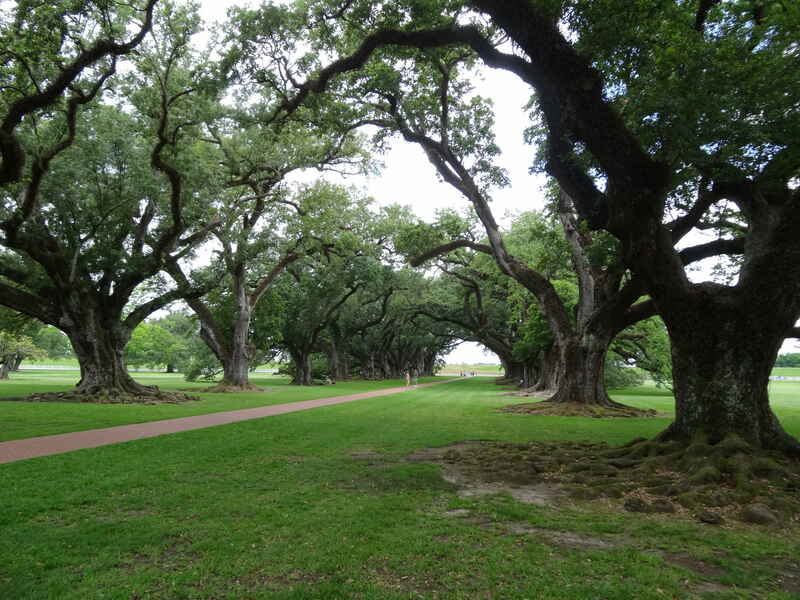
Photo Credit: denisbin / Flickr / CC BY 2.0
When it comes to a hurricane-resistant landscape, it’s best to go native. For your landscaping, pick Floridia-friendly plants that are acclimated to the local climate and weather.
Hurricane-resistant trees with sturdy trunks and deep-reaching roots are usually the best kind of trees to stand up to strong winds. If you have trees in your Tampa yard, they should be reliable, wind-resistant trees such as:
- Bald cypress
- Crape myrtle
- Dahoon holly
- Gumbo limbo
- Holly
- Manila
- Mexican fan palm
- Pindo palm
- Podocarpus
- Pygmy date palm
- Sabal palm
- Sand live oak
- Seagrape
- Southern magnolia
- Spruce pine
- Swamp chestnut oak
- Sweetgum
- Sycamore
Trees to avoid:
- Australian pine
- Bradford pear
- Chinese elm
- Laurel oak
- Sand pine
- Water oak
Advantages of wind-resistant trees:
- Wind-resistant trees are less likely to blow over
- Protects from damage caused by falling trees
- Native Florida-friendly plants generally grow better with less lawn care and maintenance
- Saves money on having to replace or remove fallen trees
Cost: Hiring a professional to plant a new tree costs about $150 to $1,850, depending on the size, age, and type of tree. A DIY job will cost less, though you will have to pay for the equipment needed for the job.
2. Keep Trees Away from Buildings and Power Lines
“Location, location, location” is the motto when it comes to strategic real estate investments, but the principle applies to landscaping trees, as well. Picking the right spot to plant your tree isn’t just about aesthetics; it’s about picking the safest and most practical location for your tree.
Don’t plant a tree right next to your house. If a tree topples over in a storm, it might fall on top of your home and cause severe damage.
The same rule applies to planting trees near power lines. A falling tree might knock over power lines and create a dangerous electric hazard. Avoid this kind of crisis by planting trees a safe distance away from power lines. If your tree grows to over 20 feet tall at maturity, then it needs to be planted at least 20 feet away from power lines.
Regularly inspect your trees for damage or illness, and remove any dead or dying trees, especially if they are near your home.
Advantages of keeping trees away from structures:
- Reduces chances of home damage
- Reduces chances of powerline damage
- Saves on damage costs
- Reduces risk of injury
Cost: The size of a tree determines the size of the job, but generally transplanting a tree costs $229 to $5,440.. Tree removal prices range from $223 to $2,089.
3. Group Trees Together
There’s safety in numbers, and when trees are clustered close together, they are more wind-resistant and less likely to topple over in hurricane-force winds. Generally it’s recommended to plant trees in groups of five or more.
It’s also better to have a mixture of different types of trees rather than planting a group of the same type of tree in the same cluster.
Advantages of grouping trees:
- Increases tree wind-resistance
- Saves homeowners the cost of tree removal and replacement
Cost: Tree prices range from $150 to $1,850, so budget accordingly for how many trees you need. Don’t forget to consider additional logistical costs, such as the extra trips it will take to transport multiple new trees from the store to your backyard.
4. Trim Trees and Shrubs
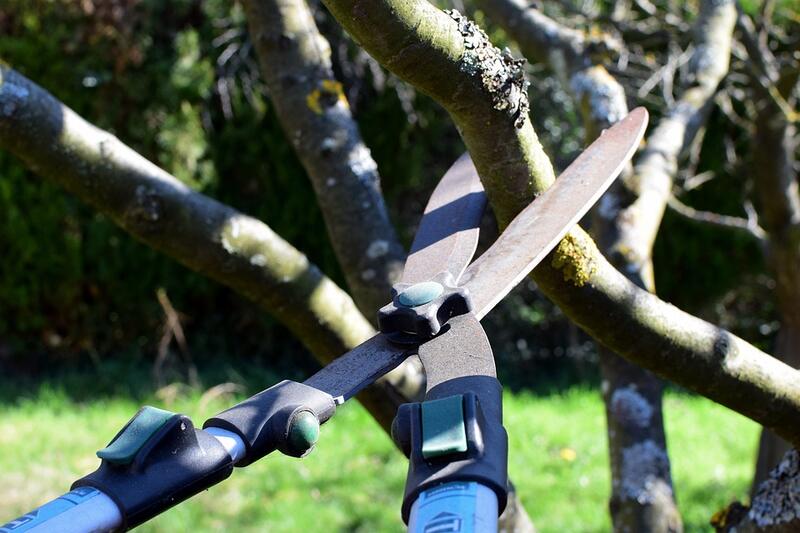
Photo Credit: Pixabay
Take care of your trees and they will take care of you. Trees are a great source of shade, natural beauty, and, depending on the type, delicious fruit. Without proper care and regular pruning, trees aren’t as resistant and durable in a storm. Keeping your trees regularly pruned helps prevent them from being tossed around in fierce hurricane winds. When it comes to pruning, look out for the three D’s: Diseased, damaged, and dead trees.
When pruning, remember to thin the crowns of your trees. If the crown of a tree is too dense, rough winds can uproot the tree by pulling it right out of the ground.
Shrubs aren’t as catastrophically destructive as trees, but loose branches from shrubs still cause plenty of problems on their own. Loose branches become dangerous projectiles in high speed winds or cause drainage blockage problems.
Advantages of tree and shrub trimming:
- Pruned trees are sturdier and less likely to fall over during a storm
- Pruning means healthier, stronger trees
- Decreases chances of branches being turned into dangerous projectiles
- Protects your home and car from being scratched or damaged by flying branches
- Saves money on removing or replacing fallen trees
Cost: To get a professional to trim your tree, you are looking at $315 to $700. A hedge trimming costs approximately $57 per hour, trimming a bush costs roughly $9, and tree trimming is often priced around $428 per tree. If you prefer to save money, you can trim your vegetation yourself.
5. Don’t Overwater Your Trees
There’s such a thing as too much of a good thing, and you might be giving your trees too much water. If you overwater trees, the roots will stay shallow because they don’t have any need to delve deeper into the soil in search of water when water is readily available near the surface.
Trees with a shallow root system are more prone to getting uprooted when fierce storms and damaging winds blow through.
To help your tree develop deeper roots, water it less frequently. If the soil around your tree is still moist, wait a week or so until it dries out. Then when the ground by the tree roots is dry, you can water your tree again. When you do water, give your tree a good, long drink. Trees need a thorough watering every so often to ensure that they continue to grow roots deeper into the ground.
Advantages of not overwatering:
- Deeper roots make your trees sturdier and more wind-resistant
- Keeps your trees healthier so they’re less prone to disease
- Use less water
Cost: This will actually be a cost-saving measure. If you water less frequently, you will be saving on your monthly water bill.
6. Choose Salt-Tolerant Plants
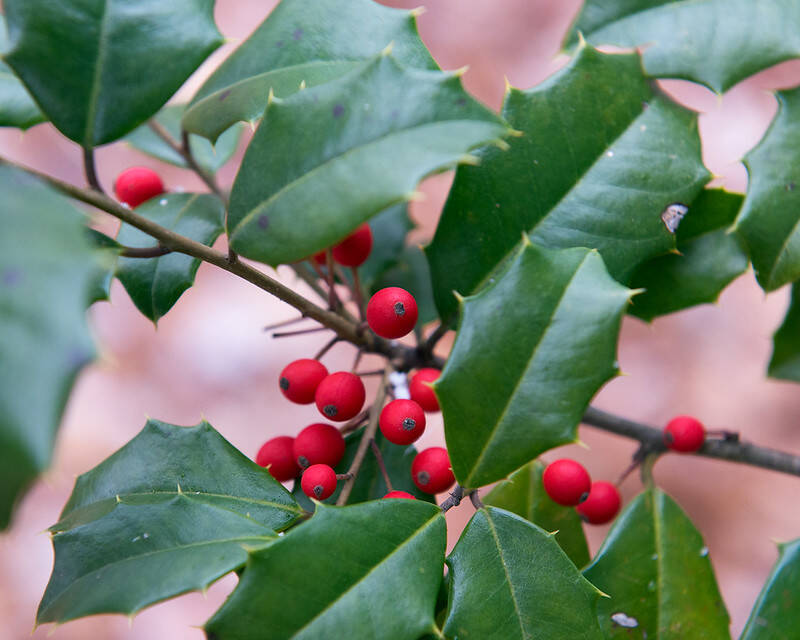
American Holly
Photo Credit: Plant Image Library / Flickr / CC BY-SA 2.0
Hurricanes are tumultuous tempests that cause wild waves that send salty sea spray flying everywhere. Sometimes gusty winds blow salty seawater right into your yard.
To help your landscaping plants survive a storm, choose tough, salt-tolerant plants such as the ones listed below:
Groundcovers and flowers:
- Calendula
- American holly
- Beach evening primrose
- Beach sunflower
- Blanket flower
- Gopher apple
- Railroad vine
- Seaside goldenrod
- Zinnia
Grasses:
- Fakahatchee grass
- Muhly grass
- Sea oats
Vines:
- Bougainvillea
Trees and shrubs:
- Agaves
- Coontie
- Firebush
- Hibiscus
- Lantana
- Live oak
- Magnolia
- Oleander
- Pineapple guava
- Sabal palm
- Saltbush
- Saw palmetto
- Southern red cedar
- Wild coffee
- Wax myrtle
- Yaupon
- Yucca
If a plant is not salt tolerant, salt will dry out the plant’s roots. This will hinder the plant from absorbing the water and nutrients it needs to survive, killing the plant.
Advantages of salt-tolerant plants:
- Your plants are less likely to die from saltwater damage
- Saves on plant replacement costs from a damaged plant bed
Cost: To have your plant bed installed by a professional, service prices typically range around $585 to $3,300.
7. Install Hurricane-Resistant Fencing
When it comes to dealing with gusty hurricane winds, you need a fence that allows air to flow through.
Even a brand new wooden fence can be easily blown over in powerful high-speed winds if there aren’t gaps wide enough allowing wind to pass through. For this reason, sturdy wooden fences usually aren’t the best options for cities like Tampa. Instead, choose a slatted fencing material, such as:
- Aluminum
- Chain-link fence
- Trellis style
- Vinyl
- Wire mesh
- Wrought Iron fence
Types of fencing to avoid:
- Wood
- Any type of solid privacy fence
Advantages of hurricane-resistant fencing:
- Fence is less likely to get knocked down
- Helps save on fence replacement costs
Cost: Prices depend on the type of fencing material, although usually fencing costs $7 to $51 per linear foot. Chain link fences cost between $6 and $36 per linear foot.
8. Build a Seawall
If you live next to the ocean, you might need a seawall. A seawall helps prevent flooding and erosion of your property near the edge where the waves relentlessly batter your property.
Seawalls can be made out of several different materials:
- Composite
- Concrete
- Rocks
- Vinyl
Seawalls are designed to block out sea waves by holding them at bay so they don’t flood your property. This is especially important during a storm surge when the weather and waves are extra wild.
Materials to avoid:
- Metal
- Wood
Advantages of building a seawall:
- Prevents erosion of the property near the beach
- Prevents flooding to your property and home
Cost: Seawall prices range from $113 to $770 per linear foot. Prices will vary depending on the scope of the project and the type of seawall material you choose.
9. Use Soft Mulch
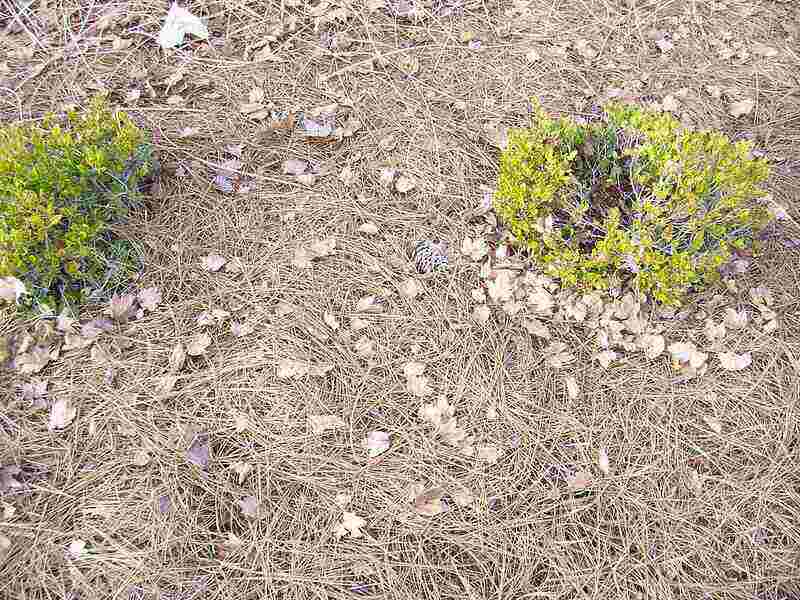
Photo Credit: pseudo obscure / Flickr / CC BY 2.0
If you use mulch in your landscape, avoid hard or sharp mulches such as pea gravel or stone. When blown around by high-speed hurricane winds, mulch becomes dangerous projectiles that cause a lot of damage when they hit windows or batter the surface of your house or car.
Soft mulch is gentler and won’t cause the same level of damage. Some soft mulches to consider include:
- Pine needles
- Shredded bark
- Shredded leaves
- Wood chips
Mulch to avoid:
- Landscape glass
- Pea gravel
- River rock
- Rubber mulch
- Stone
Advantages of soft mulches:
- Protects your windows from breaking
- Protects your house and car from being scratched up or damaged
- Soft mulches are usually much cheaper than hard mulch
Cost: Organic mulches such as tree bark, grass clippings, wood chips, or pine needles are usually best for lawns in hurricane territory. Free is always the best price, since some types of mulch types can be found in your yard, like pine needles or grass clippings. Prices of mulch vary depending on the type of mulch you want to purchase.
- Wood mulch costs $3 to $5 per 2-cubic-foot bag
- Wood chips cost around $70 per cubic yard
- Bark mulch costs around $65 per cubic yard
10. Clear Storm Drain Paths
When rain is pouring down in torrents, water needs somewhere to drain or else flooding ensues. Before a hurricane hits Tampa, check that nearby storm drains aren’t clogged. This involves checking that nothing in your landscape is obstructing or blocking storm drainage pathways.
Leaves, sticks, and other debris get washed down and become blockage. To prevent a blocked drain from causing flooding, don’t slack off on keeping the yard clean and clear, especially if there is a hurricane heading your way. Mowing your lawn before a hurricane also makes it easier for water to drain through your yard.
Advantages of clearing storm drains:
- Prevents flooding
- Reduces erosion
- Cleaner runoff
- Regular lawn maintenance keeps a healthier yard
- A debris-free lawn keeps objects from being turned into dangerous projectiles.
Cost: If there is a lot of clutter in your yard that needs to be removed but you don’t have time to do the job yourself, lawn care professionals offer services at around $154 to $411.
11. Bring Yard Decorations Inside
Before a hurricane hits Tampa, bring any loose objects inside, including outdoor chairs, lawn decor and lawn ornaments, toys, etc. Anything left outside might get blown away or become a dangerous projectile that could crash into your windows or car.
Also, if you have a pool, you should cover it to protect it from getting filled with debris.
Advantages of bringing your yard decor inside:
- Prevents loose objects in your yard from being turned into dangerous projectiles
- Prevents your belongings or yard decor being blown away
- Protects delicate yard decor from being damaged or broken
Cost: Clearing your yard should be a DIY job provided you have enough room inside your house to store your lawn decor. If there’s room, your garage can be used as a space to store your yard decor.
12. Clean Your Gutters
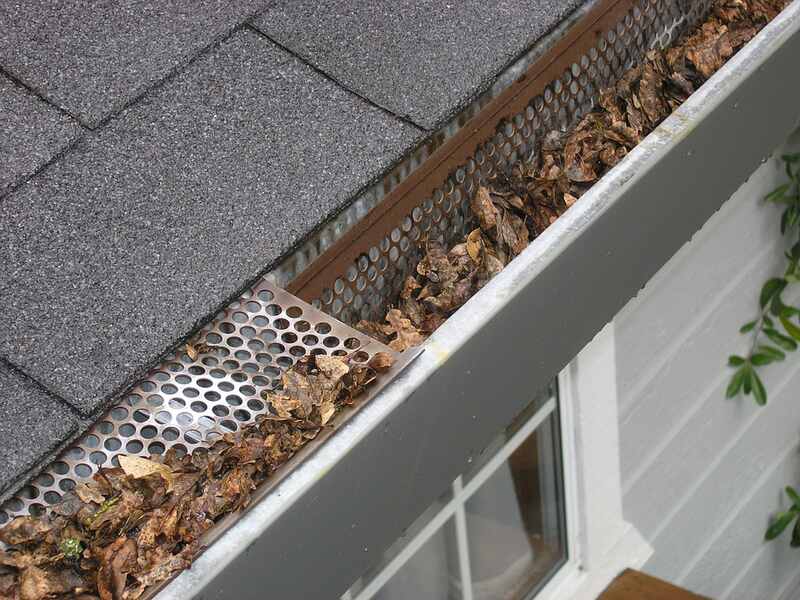
Photo Credit: Pixabay
If the weather forecast predicts that a hurricane will hit Tampa soon, than you should clean out your gutters. Clearing out leaves, sticks, or other debris clogging your gutter drainage system allows water to drain properly off your roof.
Advantages of cleaning your gutters:
- Prevents flooding
- Protects your roof and foundation
Cost: Hiring a professional to clean your gutters costs $72 to $424, depending on the size of the house and whether the house is a single-story or a multi-story building.
13. Turn Off the Sprinkler System
When there are heavy hurricane rains and the city is in danger of flooding, the last thing needed is more water on your lawn. Turning off your sprinkler systems before a storm hits helps conserve water and protect the pipes from too much pressure.
Advantages of turning off the sprinkler system:
- Conserves water
- Protects the pipe from pressure damage
- Saves money on water bills
Cost: Switching off the sprinkler system doesn’t cost any money and in fact it will save you some money on water bills.
Protect Your Tampa Home Before a Hurricane Strikes
Hurricanes are dangerous and have a tendency to leave behind a lot of wanton destruction in their path. You won’t be able to keep your yard impervious to all damage, but taking steps to protect your yard can reduce property damage and repair costs. For hurricane preparedness, follow these steps to protect your yard from damage:
Don’t forget to plan ahead and have an evacuation plan ready for your and your family. While you can take steps to protect your yard and increase its hurricane resistance, it still won’t guarantee that your yard or home will be safe. Play it safe and have a plan for what to do when a hurricane strikes.
FAQs About Hurricane-Resistant Tampa Landscaping Ideas for Tampa
The hurricane season lasts from June 1 to Nov. 30.
St. Augustinegrass and Zoysiagrass are the best hurricane-resistant grasses for Tampa yards. They are both warm-season grasses with high salt tolerance and a hardiness that makes them able to weather rough weather.
Yes. Artificial grass is wind-resistant and can handle a large amount of water during heavy hurricane rains.
How a Professional Can Help
It’s not just wind-resistant trees you need to think about when it comes to your yard: There are also shrubs, bushes, and flowers to consider, as well as fencing and what mulch types are the safest. Ideally, it’s best for Tampa residents to fill their yard with plants that are native to Florida.
If you want a hurricane-resistant landscape design, then find a Tampa lawn care pro to help you with your next landscaping project.
Main Image Credit: Mark Souther / Flickr / CC BY-SA 2.0